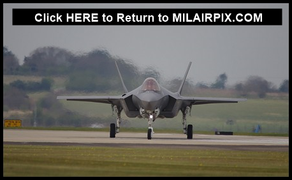|
Roger Whitcomb
Guest
|
There's a photo of what remained of the F/A-22 online at:
http://www.reviewjournal.com/lvrj_home/2004/Dec-21-Tue-2004/photos/news.jpg
The following is Las Vegas' Review Journal's coverage of the story:
Next Generation F/A-22 Raptor: Stealth fighter crashes
Nellis pilot ejects safely before impact
In the first reported crash of the military's next generation fighter jet, an F/A-22 Raptor slammed into the ground and exploded during takeoff at Nellis Air Force Base Monday afternoon.
The pilot, whose name was not released, ejected safely moments before the crash.
He was taken to Mike O'Callaghan Federal Hospital for evaluation. A Nellis spokeswoman said he was "up and walking around."
A fire engine based at Nellis flipped over as it sped to the scene of the crash, but nobody was injured in the wreck, an Air Force official said.
The crash marked the first mishap involving a Raptor since the Air Force began taking delivery of the aircraft two years ago.
The unarmed F/A-22 destroyed Monday was assigned to the 53rd Wing's 422 Test and Evaluation Squadron. It was one of about 25 Raptors the Air Force has received so far, and one of eight assigned to the testing program that began at Nellis in January 2003.
Equipped with stealth technology to help it evade enemy aircraft, the twin-engine Raptor flies fast enough to cross the 12,000-square-mile Nellis range in seven minutes. It can drop bombs, fire air-to-air missiles and shoot a six-barrel cannon.
But as the cost of the F/A-22 has swelled, estimates range from $130 million to $250 million each, the number of aircraft the Pentagon plans to buy has shrunk from 750 to about 300, according to the Government Accountability Office.
Nellis Air Force Base expects to receive nine more Raptors in the next five or six years. The aircraft is scheduled to become combat ready in 2005.
"It is by far the most advanced aircraft, not only in the U.S. fleet but in the world," said Maj. Gen. Stephen Goldfein, commander of Nellis' Air Warfare Center.
Goldfein said all aircraft at the base will be grounded this morning until the crash site is inspected in daylight. The seven remaining Raptors at Nellis will undergo a thorough inspection before they are flown again, he said.
The inspections could take hours and be done today or they could take several days, Goldfein said.
"The purpose, of course, is to prevent anything like this from happening again," he said. "Obviously, we are looking for the specific reason why the accident occurred."
Goldfein said the plane wasn't high off the ground when the pilot ejected from the cockpit.
"As soon as the pilot grabs the handle, within a second the whole system works," he said of the ejection process.
Nellis closed its runways immediately following the accident, which sent a large plume of black smoke billowing into the sky over North Las Vegas.
Four F-16C Fighting Falcons assigned to the Air Force's precision Thunderbirds flying team landed at McCarran International Airport while the runways at Nellis were closed. McCarran spokeswoman Debbie Millett said the arrival of the Thunderbirds did not cause any delays for commercial flights.
The crash was at least the fourth involving a military aircraft in Southern Nevada this year.
On Nov. 9, a $40 million Navy F-18 Hornet went down north of Las Vegas shortly after take-off. Both the pilot, who ejected safely, and his single-seat aircraft were assigned to the Oceana Naval Air Station in Virginia.
In June, an Air Force pilot safely ejected from a military jet that crashed during a training mission about 70 miles northeast of Las Vegas.
Five people were killed in a March crash involving an Air Force plane ferrying contractors to a remote part of the Nellis Test Range about 125 miles northwest of the base.
The last known crash within Nellis Air Force Base itself occurred in March 1996, when an F-15C Eagle fighter jet slammed into the ground and exploded on takeoff. The Langley, Va., pilot ejected safely.
The only other reported accident involving the F-22 was a non-fatal crash landing that occurred during testing and development of the aircraft at Edwards Air Force Base in 1992. 
|

 Home
Home

 Help
Help

 Search
Search

 Login
Login

 Register
Register


 Home
Home

 Help
Help

 Search
Search

 Login
Login

 Register
Register
